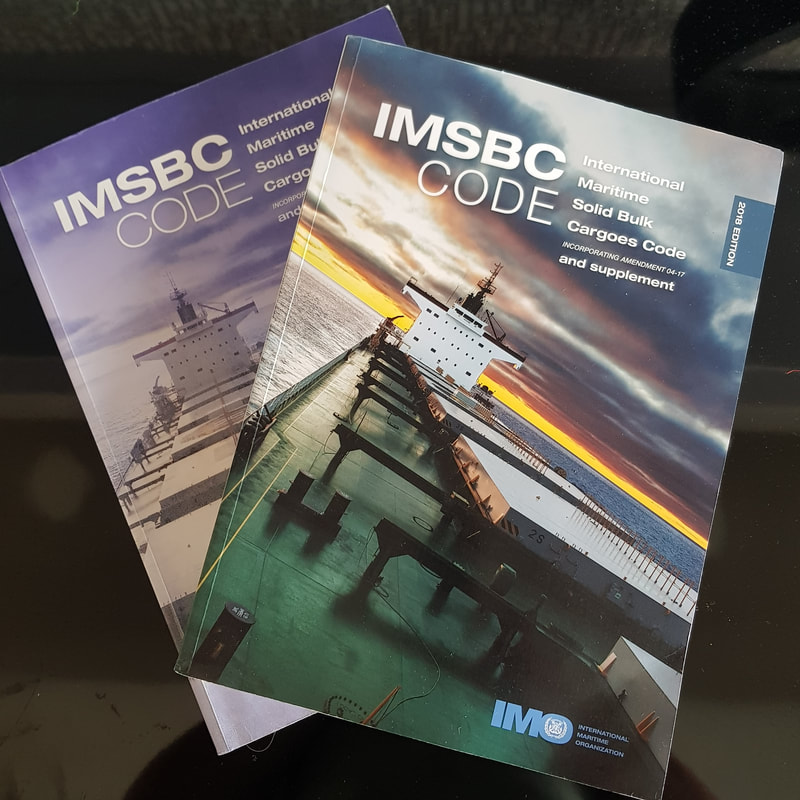|
New MARPOL Amendments entered into force on March 1 2018. Specific amendments relating to MARPOL Annex V Prevention of pollution by garbage from ships include the following:
Management of Solid Bulk Cargo ResiduesWith regard to HME classification, 2017 Guidelines to assist in the implementation of MARPOL Annex V have been published. Cargo residues are considered as HME and subject to regulations 4.1.3 and 6.1.2.1 of MARPOL Annex V if they are residues of solid bulk cargoes (other than grain) which are classified according to the criteria of the United Nations Globally Harmonized System of Classification and Labelling of Chemicals (GHS). Davoren Environmental have extensive experience in classifying solid bulk cargoes according to these requirements. For this or for any other maritime transport compliance query please contact [email protected]
1 Comment
Other notable changes to the IMSBC Code include:
Want more information?For further information on how we can assist your company with transport compliance requirements for solid bulk cargoes please contact Davoren Environmental [email protected]
Many materials produced or used in the mining and minerals processing industry are classified as hazardous according to the Globally Harmonized Classification System (GHS). The correct classification of these materials is therefore imperative to properly manage any potential health and environmental risks and ensure compliance with relevant legislative requirements[1], [2].
Davoren Environmental have significant experience working with the mining industry to conduct hazard assessments on a wide range of materials for classification against relevant transport codes[3]. Some of the materials assessed include:
Our aim is to make the hazard assessment and classification process as simple and tailored as possible by: 1. Consulting with the client to: a. Fully understand the material’s physical/chemical characteristics to identify the relevant hazards that apply, and consequently the applicable tests that need to be conducted; and b. Confirming how this material will be transported to identify relevant legislation to be addressed. 2. Coordinate and manage this testing directly with laboratory; 3. Compile a comprehensive classification report based on results of 1 and 2 above which will clearly detail the hazard assessment and classification of the material against applicable transport regulations. Want More Information? For further information on how we can assist your company with transport compliance requirements please contact Davoren Environmental [email protected] [1] ICMM, 2014. Hazard Assessment of Ores and Concentrates for Marine Transport. [2] Australian Government, 2016. Hazardous Material Management: Leading Practice Sustainable Development Program for the Mining Industry. [3] Australian Code for the Transport of Dangerous Goods by Road and Rail (ADG) in Australia; International Maritime Dangerous Goods (IMDG) Code for maritime transport of packaged dangerous goods, including substances, mixtures and articles; and the International Maritime Solid Bulk Cargoes (IMSBC) Code and International Convention for the Prevention of Pollution from Ships (MARPOL Annex V) for shipment of solid bulk cargoes. The International Convention for the Prevention of Pollution from Ships (MARPOL) is the main international convention governing the prevention of pollution to the marine environment by ships from operational or accidental causes. The MARPOL convention was adopted in 1973, whereas the actual protocol was adopted in 1978. The combined instrument MARPOL 73/78 entered into force in 1983, and has been subject to amendments over the years. In July 2011, the International Maritime Organization (IMO) adopted revisions to MARPOL Annex V that were of specific relevance to the transport of solid bulk cargoes. In accordance with MARPOL Annex V, the management of the residues of solid bulk cargoes depends primarily on the classification of the solid bulk cargo as to whether it is Harmful to the Marine Environment (HME) or non-HME. In 2012, the Marine Environment Protection Committee (MEPC) of IMO, adopted the 2012 Guidelines for the implementation of MARPOL Annex V (resolution MEPC.219(63)) to assist in the implementation of requirements for MARPOL Annex V. Residues are considered as HME if they are classified against any one of the following seven parameters according to the criteria of the UN GHS[1]
Want More Information?For further information on how to classify your solid bulk cargo to address HME designation requirements or for any other maritime transport compliance query please contact Davoren Environmental [email protected]
[1] Refers to the 4th revised edition of the Globally Harmonized System of Classification and Labelling of Chemicals, published by the United Nations as document ST/SG/AC.10/30/Rev.4. [2] Products that are classified for Carcinogenicity, Mutagenicity, Reproductive Toxicity or STOT-RE for oral or dermal hazards or without specification of the exposure route in the hazard statement [3] International Maritime Solid Bulk Cargoes Code (IMSBC, 2016 Edition) Incorporating Amendment 03-15 and Supplement. |
Archives
January 2020
Categories
All
|
Services |
Company |
© COPYRIGHT 2016. ALL RIGHTS RESERVED.
|


 RSS Feed
RSS Feed